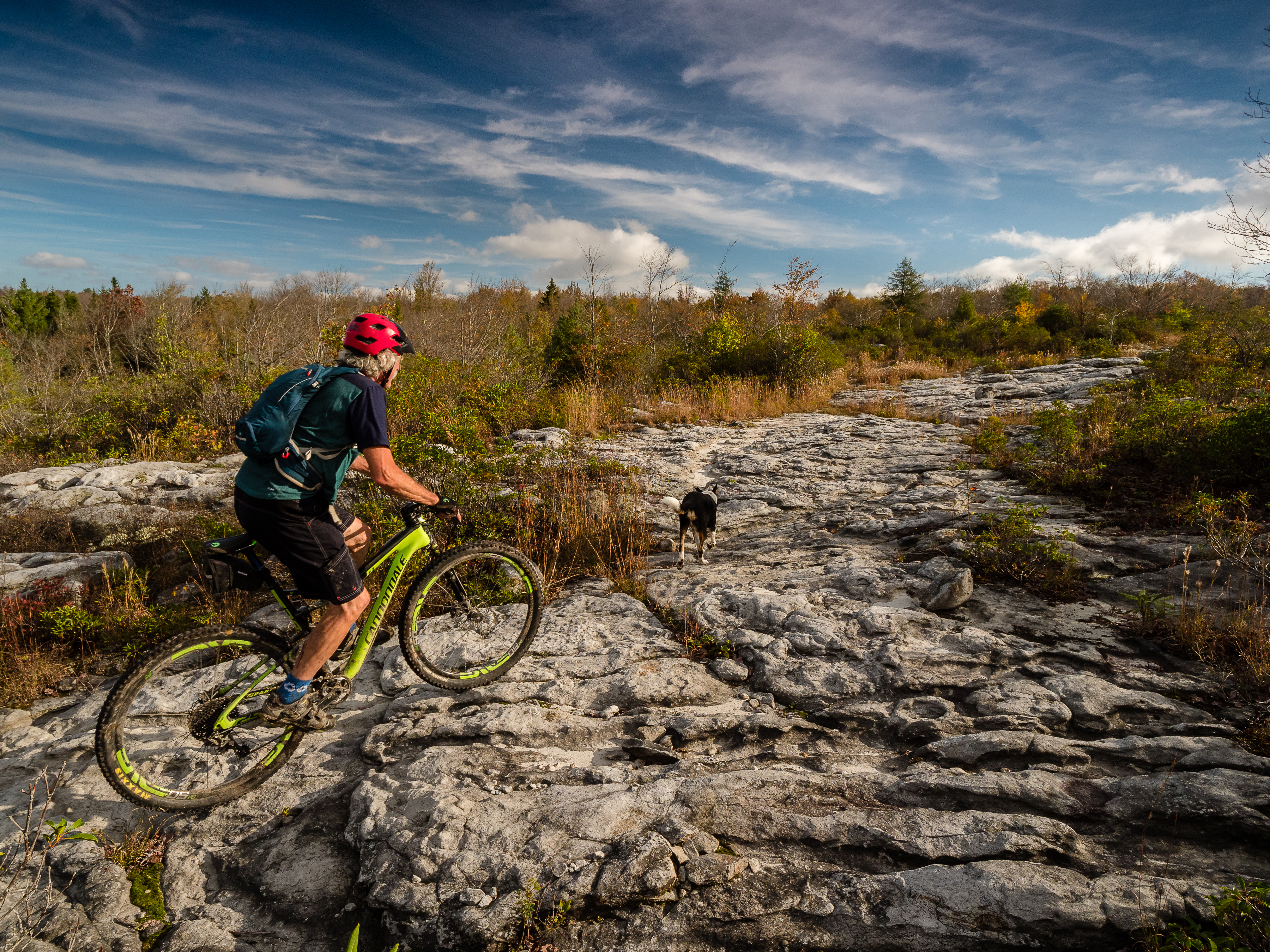MORGANTOWN — The West Virginia Land Trust has purchased 860 acres near Thomas in Tucker County that includes the popular Moon Rocks hiking and mountain biking area.
They’ve dubbed it the Yellow Creek Preserve, after a tributary of the Blackwater River that flows through the land, and intend to continue preserving it and promoting its recreational opportunities.
“We see this as a legacy project,” said Brent Bailey, executive director for the land trust. “It’s an iconic property where we want to not only restore and preserve the unique natural features, but also ensure recreational opportunities, which are a major draw for people coming to the Davis, Thomas, and the Canaan Valley area.”

The trust (abbreviated WVLT) bought the land for $800,000, through its “Buy the Moon” campaign, from the Vandalia Heritage Foundation.
As The Dominion Post reported in March 2018, Vandalia had taken some flak for selling off a few smaller parcels of the original 1,229 acre tract. The mountain biking community, especially, was concerned that further sales might cut off access to Moon Rocks.
Laura Kurtz Kuhns, president and CEO of the Vandalia Heritage Foundation and the Vandalia Redevelopment Corp., said Friday that part of the foundation’s mission is historic preservation, and they had no intention to cut off access. But the negative attention was a spark to get them focused on seeking the right partner to sell it to.
With WVLT’s purchase, “We felt it was in the right hands,” she said. “It’s going to continue to be preserved. … We just feel it’s an excellent outcome.”

The preserve contains the three-mile Moon Rocks-Hoodoo Rock loop trail and links to more than 20 miles of the Heart of the Highlands Trail System, the trust said. “This preserve will be permanently protected by the Land Trust and open for public outdoor recreation use for future generations to enjoy.”
WVLT Executive Director Brent Bailey said they’re just in the in the early stages of stewardship, so not all their plans for the preserve are in place. “But we intend to work with local organizations to manage the site, and will have an advisory committee to help guide the site’s development.”
They want the preserve to serve the public and support the growing recreational economy in the county, he said.

Vandalia paid taxes on the land, but WVLT is a tax-exempt nonprofit. Bailey said they generally request a tax exemption for their lands.
“We have discussed tax exemption, and the loss of property tax revenue, with the county commission,” Bailey said, “and we will talk with the county assessor about a reduction in the taxes that have been paid to date. But we may make a Payment in Lieu of Taxes for a short period of time as we prepare for the property to be used in ways that generate income locally.”
Ashton Berdine, WVLT’s lands program manager, explained the conservation value of the preserve. Its wetlands and uplands and wildlife habitat are part of the larger complex that makes up Canaan Valley. Its neighbors are a national wildlife refuge and a state wildlife management area. Nearby is a national forest. The wetlands contain some rare species, and blueberries, huckleberries and cranberries grow on the land.
The trails are an easy walk for hikers, he said, and offer all kinds of scenery: goldenrod meadows, rock formations, forests and streams. “It’s a real diverse place to hike.”
The Buy the Moon campaign took about two years, Berdine said. The West Virginia Outdoor Heritage Conservation Fund contributed $250,000. The state Abandoned Mine Lands pilot program gave $400,000. Private donors provided the remaining $150,000.
Berdine said he wanted to be sure that the agencies and the private donors get their due credit and thanks for their contributions.
He also credited Vandalia for being very generous with its selling price.
As reported in 2018, Vandalia bought the land in 2004 for just under $2.42 million. Their goal was “to ensure preservation and appropriate development of what we believe is a very special area ecologically and in terms of cultural heritage.”
They bought it from a power company and opened it to public use, working with environmental and community groups to preserve the area and keep it available for recreation.
But the property taxes were a concern and they sold off select parcels to cover those and other costs associated with the land.
It made sense to partner with WVLT, Kuhns said, because Vandalia isn’t a land management company. Their mission is preservation, but even more so revitalization. “The core of our being has been redevelopment and development in areas that need it.”
Their restoration of two buildings in Thomas 20 years ago, Vandalia believes, helped open the door for the tourist draw and economic engine it’s become.
WVLT was the perfect entity to buy the land, she said. For that reason, they worked with the trust for a couple years to reach an agreeable price and sold it for about 33 cents on the dollar.
“They’re going to do a great job, I am confident,” Kuhns said. “They have good plans.”
With the preserve in good hands, Kuhns said, Vandalia can refocus on its core mission. The two former coal company buildings in Thomas – one owned by the city – are due for some attention.
And Vandalia retained 90 acres of the land tract. They’re evaluating the best way to use it.
One idea they’re considering, she said, is a low-density, low impact recreational community. The housing might be two-floor cottages, with living space above and storage below for the bikers and hikers. They might rent them or sell them.
But nothing is definitive, Kuhns said. “These are things we’re looking at. Something that would be compatible and would allow access and take advantage of these great trails that have been built across the land.”
Tweet David Beard @dbeardtdp Email dbeard@dominionpost.com




